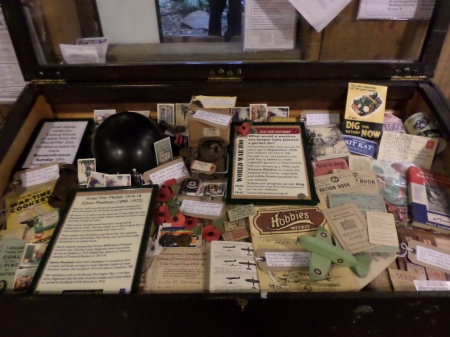January 24th 2015 is the 50th anniversary of the death in 1965 of Winston Churchill, wartime prime minister and coiner of many memorable phrases including, most notably for our wartime gardens project, “War is the normal occupation of man. War – and gardening” (speaking to Siegfried Sassoon in 1918).
January 25th 2015 and 7th February 2015 are the less well-marked 70th anniversaries of several zoo and botanic garden casualties who died as FEPOWs (Far East Prisoners of War) or in the vicious fighting of what was called the ‘forgotten war’ in the jungles and oceans of the Far East. For many, the Burma Star was hard won.
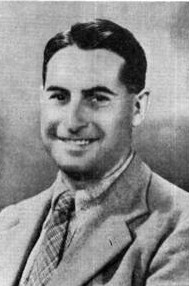
G H Spare from the Kew Guild Journal obituary c. 1945/6
Remembering Albert Henry Wells, London Zoo keeper killed in action, Burma, 25 January 1945
Remembering Gordon Henry Spare, Old Kewite / former Kew Gardens staff who died as a Far East POW (FEPOW), Borneo, 7 February 1945
Amongst the family medals I saw from childhood and that I now look after is a Burma Star belonging to my maternal grandfather, who died before I was born. A naval holder of the Burma Star for his service on aircraft carriers in the Far East, he survived several Kamikaze attacks. We still have some of the dramatic photographs in our family album.
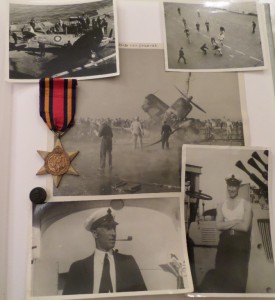
My grandfather Len’s Burma Star for naval service, with two portraits and his photos of life on board deck of an RN aircraft carrier from kamikaze attacks and seaplane prangs to deck hockey c. 1944/45 Source Image: Mark Norris, World War Zoo gardens Collection.
So one day about fifteen years ago, I knew I would meet some amazing people with tales to tell when I was told that the Burma Star Association were visiting Newquay Zoo (home of the World War Zoo Gardens project) during a holiday gathering. I met them all by accident whilst I was clambering around our indoor rainforest in the Tropical House at Newquay Zoo, doing a feeding talk and rainforest chat.

Part of our Tropical House at Newquay Zoo.
As they entered the heat and humidity of our Tropical House, I heard a different reaction to the usual “what’s that smell?” White haired old men remarked amongst themselves and to their wives that the smell “took them back a bit”. They were all transported back in memory to the tropics by that wet damp jungle smell.
As I scattered mealworms to attract the birds, pointed out various species of plants or animals then introduced some snakes and insects, I was surprised to be asked by one of them “if I knew what all the animals tasted like?”
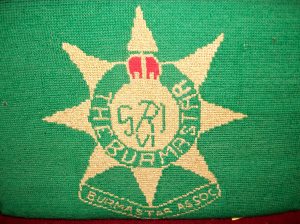
The Burma Star embroidered: Embroidered hassock cushions, Zennor Parish Church Cornwall. Image: Mark Norris /WWZG
I should have realised why he asked when I saw the Burma Star proudly embroidered on some of their blazers and the regimental ties. These tough old men soon told me how they survived as soldiers or prisoners in the jungle, eating whatever they could catch or collect. For some of the prisoners amongst them, it literally saved their lives.
I quickly gave up talking and allowed our zoo visitors to listen to their jungle survival stories. From what I remember, to these hungry men, everything from snakes to insect grubs tasted “like chicken!” Having eaten a few unappetising invertebrates in the past, and those mostly dipped in chocolate, it only proves that hunger is the best sauce to unusual food!
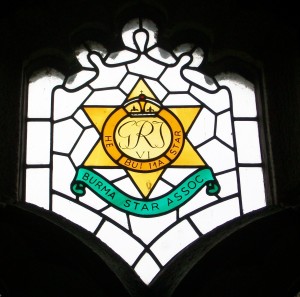
Burma Star Association window, Zennor Parish Church, Cornwall. Image: Mark Norris / WWZG
We do many rainforest talks for schools and visitors in our evocative and atmospheric Tropical House at Newquay Zoo, home to many interesting jungle animals including rare birds like the critically endangered Blue Crowned Laughing Thrush.
I often think of those Burma Star veterans (who would now all be in their nineties, if still alive) and tell their “bushtucker” story whilst working or talking to people in the Tropical House.
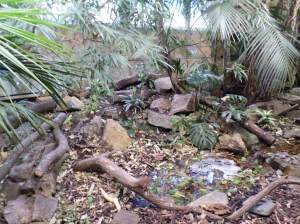
Part of our Tropical House at Newquay Zoo.
I thought of them recently when passing the Portscatho Burma Star memorial overlooking the harbour in Portscatho in Cornwall. I was puzzled why of all places it was there, but recently found more on the BBC archive about the unveiling of this here in 1998. This memorial is especially dedicated for the missing who have no known grave, people like G.H. Spare of Kew or Henry Peris Davies of ZSL London Zoo. It is “dedicated to the memory of 26,380 men who were killed in Burma 1941-45 and who have no known grave, thus being denied the customary rights accorded to their comrades in death.”
I wonder if the dedication of this memorial was the reason for the Burma Star Association gathering and social visit to Newquay Zoo, where I memorably met Burma Star veterans? This would have been around 1998.
I especially think of these men whenever I look at the Burma Star window in the beautifully rugged coastal church at Zennor in Cornwall.
I have inscribed the name of my Grandfather in the Burma Star memorial book at Zennor, along with the names of some of the casualties amongst London Zoo and Kew Gardens staff who died on active service in the Far East.

Burma Star memorial book and lectern, Zennor Parish Church, Cornwall. Image: Mark Norris / WWZG

Close up of the Burma Star memorial inscription,
Portscatho, Cornwall
Image: Mark Norris

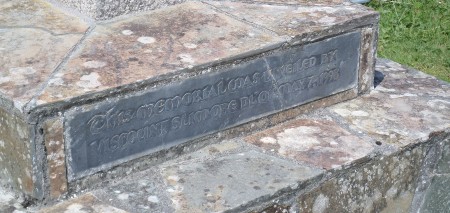
Dedication on the Burma Star Memorial Portscatho Cornwall, unveiled by Viscount Slim, 1998 . Image: Mark Norris.
I also thought of these men when displaying books and a silk jungle escape map in a display about another old man in the jungles of Far East Asia, plant hunter Frank Kingdon-Ward.
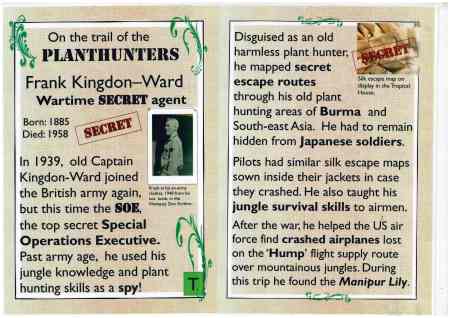
Frank Kingdon Ward in WW2 from a trail board from a past Newquay Zoo plant hunters trail. Image: Mark Norris / WWZG
If any prisoner had escaped or aircrew crashed down in these jungles, silk escape maps like these would have been a life saver. After the war, explorers like Frank Kingdon-Ward helped the US government find their missing aeroplanes (and crew) in these dense jungles and mountains. In this connection, see our postscript about missing aircrew on the Melbourne Botanic Gardens staff memorial tree: Flight Sergeant E.J. Hiskins, RAAF 1944.
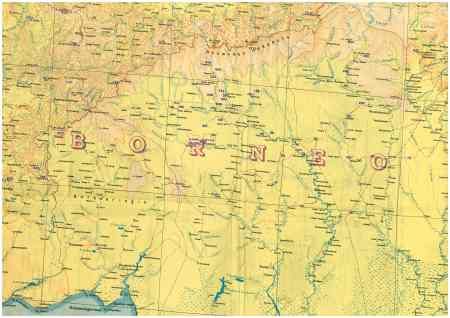
The lower part of Borneo on a secret WW2 silk escape map in the World War Zoo Gardens collection. Labuan Island POW camp, Sabah, Borneo where G.H. Spare died is off the map, further up the coast on the left-hand side (now off the coast of modern Malaysia).
From the Kew Gardens staff war memorial:
G.H. Spare, 7 February 1945
Gordon Henry Spare, Private 6070 SSVF Straits Settlements Volunteer Force / 3rd Battalion (Penang and Province Wellesley Volunteer Corps), Singapore Volunteers, died at Labuan, Borneo as a Japanese POW.
According to CWGC records Spare is remembered on column 396 of the Singapore or Kranji Memorial, as he has no known grave. He was the son of Harry and Grace Spare, Wallington, Surrey, and husband of Rose Ellen Spare, Worthing, Sussex. His wife, young son and daughter were evacuated clear of danger before the Japanese invasion.

G.H. Spare of Kew and Henry Peris Davies of ZSL London Zoo are remembered on the Singapore Memorial (image copyright CWGC website http://www.cwgc.org)
John Charles Nauen, 10 September 1943
J.C.Nauen was Assistant Curator, Botanic Gardens Singapore from 1935. Nauen served with G.H. Spare as a Serjeant 5387, volunteer in the 3rd Battalion, (Penang and Province Wellesley Volunteer Corps) SSVF Straits Settlement Volunteer Force.
His botanic skills were of help gardening and collecting plants from the local area to help keep fellow prisoners alive. Nauen died as a Japanese POW prisoner of war aged 40 working on the Burma-Siam railway in September / October 1943 of blood poisoning. He is buried in Thanbyuzayat CWGC Cemetery in Burma, alongside 1000s of fellow POW victims from the Burma-Siam railway. He was the son of John Jacob and Clara Nauen of Coventry.
Some of Nauen’s plant collecting herbarium specimens survive at Kew, whilst he has an interesting obituary in the Kew Guild Journal 1946 (alongside G.H. Spare) and The Garden’s Bulletin Singapore September 1947 (XI, part 4, p.266).
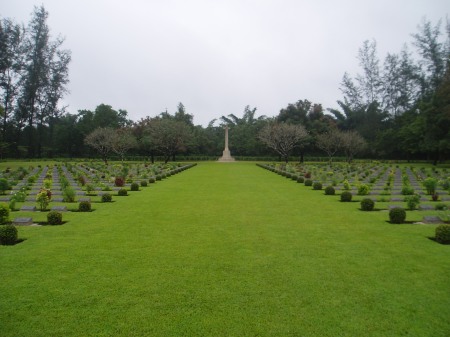
John Charles Nauen of Kew and Percy Murray Adams, ZSL Whipsnade keeper who both died as Japanese POWs are buried here at THANBYUZAYAT WAR CEMETERY. Image: http://www.cwgc.org
Many Botanic gardens and Herbariums were looted by invading forces, Singapore Botanic Gardens only surviving through the efforts of botanist Edred Corner.
More about Kew Gardens staff in WW2 can be found on this blog post. https://worldwarzoogardener1939.wordpress.com/2013/04/06/the-lost-gardeners-of-kew-in-world-war-two/
An interesting Kew Gardens archives blog post on the vital nutritionist role of tropical botanists in keeping fellow POWs alive in internment camps has been recently written by James Wearn and Claire Frankland.
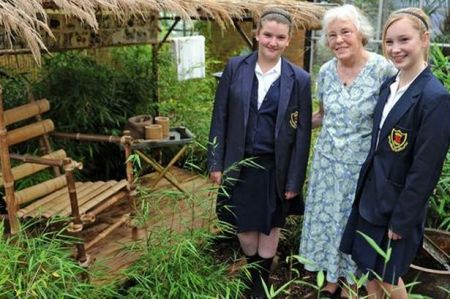
Ness Botanic Gardens FEPOW Bamboo Garden launch with Elizabeth and Zoe, pupils from Pensby High School and Merle Hesp, widow of a FEPOW Harry Hesp, 2011.
Image source: Captive Memories website.
A Far East Prisoner of War memorial garden was created in 2011 at Ness Botanic Gardens in Liverpool, linked to http://captive memories.org.uk There is more about this garden at the Waymarking website FEPOW garden entry

Wells, Adams, Davies: three of the five fallen ZSL staff from the Second World War, ZSL war memorial, London Zoo, 2010 (plaque since replaced with a more legible one, 2014)
London Zoo staff names killed in the Far East
1. Henry Peris Davies (Lieutenant RA) ZSL Clerk: Killed in action Far East 21.12.1941
Lieutenant Davies 164971, Royal Artillery, 5th Field Regt, died aged 27. His name is listed on the Singapore memorial, like that of Gordon Henry Spare of Kew
According to his ZSL staff record card, Peris was born on 29th March 1913, he joined London Zoo as an accounts clerk on 2 September 1935. Four years later, he was called up as a Territorial on the 1st or 2nd September 1939.

Taukkyan Cemetery, Burma.
Image Source: CWGC
2. Albert Henry Wells (Gunner RA) ZSL Keeper: Killed in action, Burma 25.01.1945
Gunner Wells 1755068, Royal Artillery, 70 H.A.A Regiment is buried in an individual grave in Taukkyan Cemtery, Burma, a concentration of thousands of battlefield graves from the Burma campaign. He was aged 36, the son of Henry and Mary Wells and husband of Doris Hilda Wells, Hendon, Middlesex.
According to his ZSL staff card, Albert Henry Wells was born on the 15 or 25 April, 1908. He was first employed at London Zoo in January 1924 as a Helper, the most junior keeper rank. He had worked his way up to 3rd Class Keeper by 1937.
On January 11 1941 he was called up for military service and his staff card reports him as killed in action in Burma January 25 1945.
The rest of his staff card involves details of the pension being paid by ZSL London Zoo to his wife Mrs. Wells including additional amounts for each of his three children until they reached 16 in the 1950s.
3. Percy Murray Adams (Gunner RA) ZSL Whipsnade Keeper: Died in Japan POW 28.07.1943 aged 26. Gunner 922398, Royal Artillery, 148 (Bedfordshire Yeomanry) Field Regt.
According to his ZSL staff card, he was born on 15 July 1917 and joined ZSL Whipsnade on 24 May 1932. Like Henry Peris Davies at London Zoo, he was called up as a Territorial on September 3rd 1939. Adams was unmarried. In March 1942, his staff record card reports him as “Reported as Missing at Singapore. In 1945 reported died of dysentery in Japanese POW camp somewhere in 1943.”
Only a few rows away from Kew’s J.C.Nauen, Adams is also buried in Thanbyuzayat CWGC Cemetery in Burma.

Percy Murray Adams, ZSL Whipsnade Keeper, Animal and Zoo Magazine c. 1937/8
These three men are all remembered on the ZSL London Zoo staff war memorial WW2 plaque. I also inscribed their names in the Burma Star Association memorial book in Zennor Church on my last visit.
I will be updating the entries on ZSL London Zoo WW2 staff casualties later in 2015.
The grim story of what happened to Japanese zoo staff, vets and animals is well told in Mayumi Itoh’s recent Japanese Wartime Zoo Policy.
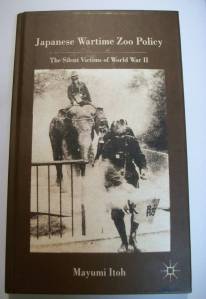
Gas masks for Japanese zoo elephants on the cover of Mayumi Itoh Japanese zoo wartime book
Further reading about POW gardening can be found in Kenneth Helphand’s Defiant Gardening book and extension website
You can read more about the Burma Star and its assocaition on this website: http://www.burmastar.org.uk/epitaph.htm
It’s probably appropriate to end with the Kohima prayer or Burma Star epitaph, which I didn’t realise came from WW1 but was used on the Kohima Memorial to the dead of the Burma Campaign in WW2. The words are attributed to John Maxwell Edmonds (1875 -1958), an English Classicist who had put them together among a collection of 12 epitaphs for World War One in 1916:
“When You Go Home, Tell Them Of Us And Say,
For Their Tomorrow, We Gave Our Today”
Rest in peace, Gunner Wells and Gunner Adams and the many others who never returned.
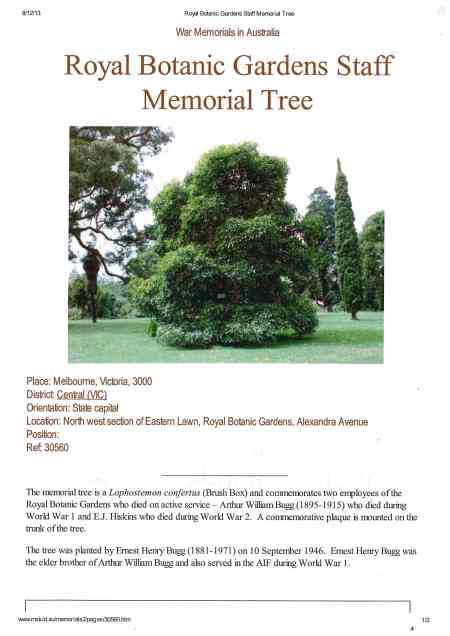
Melbourne Botanic Gardens Australia staff memorial tree.
Postscript
Later this year I will blogpost about the staff memorial tree at Melbourne Botanic Gardens which remembers a Gallipoli / Middle East campaign casualty and an airman from the Far East Campaign in WW2.
Planted in memory of members of the staff who died in Active Service.
Driver A.W. Bugg, AIF 1915.
Flight Sergeant E.J. Hiskins, RAAF 1944.
10th September 1946
The original memorial tree website said that “information regarding E.J. Hiskins would be welcomed“. His CWGC records list him as Flight Sergeant Ernest Joseph Hiskins, Royal Australian Air Force, 410058, who died on the 15 April 1944.
He is remembered on Panel 9 of the Northern Territory Memorial. He is listed as the son of Ernest Barton Hiskins and Alice Mary Hiskins, of Brunswick, Victoria, Australia.
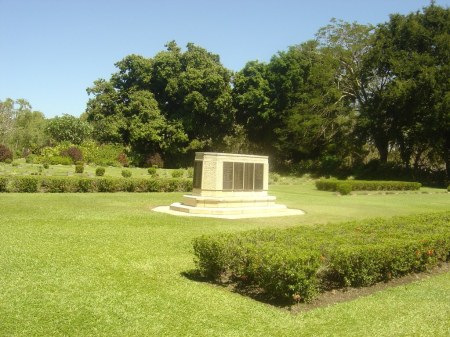
Northern Territory Memorial, Australia (Image CWGC website)
The Northern Territory Memorial stands in Adelaide River War Cemetery and is one of several memorials erected to commemorate 289 men of the Australian Army, the Royal Australian Air Force and the Australian Merchant Navy who have no known grave and lost their lives in operations in the Timor and Northern Australian regions and in waters adjacent to Australia north of Latitude 20 South.
More to follow!
Blog post by Mark Norris, World War Zoo Gardens project, Newquay Zoo









































